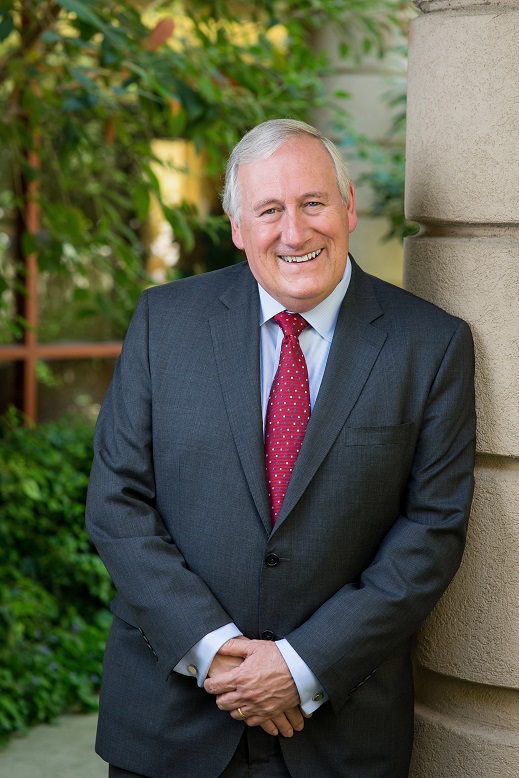For all the promises made in the debate over expanding access to health insurance in the U.S., one important aspect has gone largely unnoticed: insurance aside, America simply does not have enough pediatric specialists and subspecialists to care for the growing number of children with serious diseases and chronic conditions.
This critical shortage poses not just a dilemma for local and national healthcare organizations, but it requires completely new ways of thinking.
For example, more than 15 percent of children under 17 in the United States – over 11 million kids – have special healthcare needs. This includes chronic, complex and rare conditions, including those once considered life-threatening. Of the San Francisco Bay Area's 1.6 million children, an estimated 160,000 may need expert medical attention requiring a pediatric specialist.
This sizable population creates demand for specialists equipped with the latest in diagnosis and treatment options. Every day at Lucile Packard Children's Hospital Stanford and Stanford Children's Health, I see how highly trained specialists and the necessary teams of nurses, therapists, social workers and child life support staff make a difference for these children and their families.
But with four times as many adults as children in the U.S, the majority of our nation's health and medical resources are focused on adults. There are too few centers that have the clinical and family support capability in children's healthcare needs and too few specialists entering such fields as pediatric neurology, pediatric gastroenterology, pediatric surgery and developmental-behavioral medicine.
What accounts for the scarcity? Firstly, it's the time and expense of additional training for specialists and subspecialists. After four years of medical school, their education continues with three years of pediatric residency and another three years minimum of subspecialty training. Federal funds available to support this training under the Children's Hospitals Graduate Medical Education Program have declined substantially since 2010 . Specialists also face stiff competition for a limited number of training programs.
And despite their expensive and extended education, pediatric specialists struggle to achieve income parity. The salary differential between adult and pediatric specialists is acute. In fact, the salaries of pediatric specialists are approximately 20 to 40 percent lower than their adult specialist counterparts for some specialty areas. In California, MediCal pays a pediatrician only an average of 54 percent of Medicare reimbursement rates for comparable services provided to adults.6 This shortfall in funding places pressure on pediatric subspecialty compensation and further hinders growth in these professions.
A shortage of specialists can mean a family waits weeks or months for an appointment, or must travel long distances to see a specialist. This may delay treatment, increase emergency room visits and add to family stress and expense.
Addressing this challenge demands new approaches to healthcare delivery. One approach is to expand access to pediatric specialty care. That's why Stanford Children's Health has been establishing specialty service centers with California Pacific Medical Center in San Francisco, John Muir Health in Walnut Creek; and in at six other locations in the San Francisco Bay Area.
Specialty centers have benefits beyond providing more treatment options to patients. Importantly, they can attract specialists who want to serve a broad and diverse population. They also provide more options for training, which ensures the next generation of pediatric specialists – who often prefer to train at an academic medical center and children's hospital like ours -- with the highest quality medical experience.
Healthcare organizations must also examine other ways to bring care closer to patients. This expanded access can be accomplished by sending physicians on the road, as we have done with our liver transplant program for example, or by deploying technology more rapidly. We've tapped video technology to connect specialists and patients in an approach we call telehealth, offering easier access to specialists and decreasing burdens on families who must travel for care. Specialists can even connect with patients through home health monitoring. An example is our pilot project using Apple's HealthKit to enable endocrinologists to remotely monitor blood sugar levels among children with Type 1 diabetes.
It's incumbent upon leading healthcare organizations, along with state and federal health programs, to address the shortage of pediatric specialists and subspecialists. We must develop new approaches to providing access to high-quality, specialized care for kids in need. Together, we can create a model that reduces costs, improves outcomes, increases access and creates a better patient experience.
Dawes, former chair of the Board of Trustees for the National Association of Children's Hospitals and Related Institutions and also the National Association of Children's Hospitals, serves on the board of the California Children's Hospital Association. In addition, Dawes is also a board member of the California Hospital Association and their executive committee; the Santa Clara Family Health Plan; and the Silicon Valley Leadership Group.

1 http://www.childhealthdata.org/browse/survey/results?q=1792&r=1
2 http://www.bayareacensus.ca.gov/bayarea.htm
3 Historical CHGME Funding, accessed at https://www.childrenshospitals.org/~/media/Files/CHA/Main/Issues_and_Advocacy/Key_Issues/Graduate_Medical_Education/Fact_Sheets/Historical_CHGME_Funding02042014.pdf
4 Letter to Cong. Joe Courtney on behalf of "Pediatric Subspecialty and Mental Health Workforce Reauthorization Act (HR 1827)" dated 8/5/13, signed by 27 academic and medical societies. Accessed from American Academy of Pediatrics website.
5 http://www.healthcapital.com/hcc/newsletter/03_14/Shortages.pdf
6 "Reform May Improve Access to Pediatric Specialties," California Healthline, May 2, 2013
The views, opinions and positions expressed within these guest posts are those of the author alone and do not represent those of Becker's Hospital Review/Becker's Healthcare. The accuracy, completeness and validity of any statements made within this article are not guaranteed. We accept no liability for any errors, omissions or representations. The copyright of this content belongs to the author and any liability with regards to infringement of intellectual property rights remains with them.